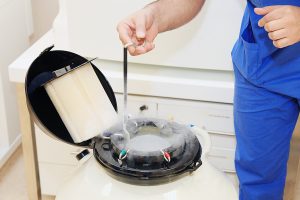- The researchers, from the Eugin Group, studied a sample of 37,520 donated eggs by more than 1,800 women. Each woman provided eggs that were to be used fresh and vitrified, and the results between them were compared.
- The research was presented at the 35th annual congress of the European Society of Human Reproduction and Embryology (ESHRE), held in Vienna, and won Best poster presentation on a clinical science topic.
The reproductive results of the eggs frozen by the vitrification technique are comparable to those obtained with fresh eggs. This has been made clear in the most wide-ranging comparative study done to date using “sibling” eggs, namely eggs produced by the same woman, in which they analysed a sample of 37,520 fresh and vitrified eggs, donated by over 1,800 different women.
The research was carried out by researchers from the Eugin Group and was unveiled in Vienna during the 35th annual congress of the European Society of Human Reproduction and Embryology (ESHRE). The study, presented by one of its main authors, Dr. David Cornet-Bartolomé, won the Clinical Science Award for poster presentation amongst more than 800 studies presented.
“Given the magnitude of the sample analyzed in this study, we can emphatically state that the use of fresh eggs with respect to vitrified ones offers very similar results,” said Dr. Amelia Rodríguez-Aranda, medical director at Eugin and co-author of the award-winning research.
To carry out this study, we retrospectively analyzed the reproductive results of a sample of 37,520 eggs. Half had been vitrified and the other half used fresh by women undergoing in vitro fertilization treatment with donor eggs (egg recipients). The eggs belonged to 1,844 different donor women and the reproductive results were compared between “sibling” eggs, belonging to the same donor, thus making the study more reliable.
On first analysis, the research suggested that the reproductive results of the fresh eggs, in other words, the biochemical, clinical, on-going and live birth pregnancy rates, were better than those of the vitrified ones.
However, when the researchers focused on those cases in which the same number of fresh and vitrified eggs had been inseminated for each woman, the conclusion was that the reproductive results of the fresh and vitrified eggs were the same. In particular, the vitrified eggs recorded a live birth rate of 32.1% while that of their fresh “siblings” was 32%. The aim of this sub-analysis was to separate the effect of the loss of vitrified eggs that do not survive the warming from the reproductive results of the eggs actually used in the IVF cycle.
The researchers conclude that vitrification per se does not harm the oocyte’s fertility and thanks to their work take the opportunity to recommend that assisted reproduction clinics implement strict efficiency indicators for egg vitrification and devitrification and improve these processes in order to maximize the survival rate at devitrification.
